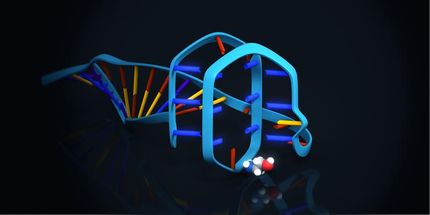Aventis: Prepared for the post-genome challenge
Aventis highlights network-centric approach at press briefing in Boston
Drug discovery in the post-genome era will be more complex than ever before, and only a network-centric approach to drug discovery will meet the new complexity challenge, Aventis executives told science writers at a press briefing on Tuesday on occasion of the Drug Technology Conference in Boston.
The new paradigm of Chemical Biology is of paramount importance in this context as it promises to allow for a steady flow of innovative drugs to be delivered through the pipeline to the patients, the company officials said.
In search of novel targets for drug discovery, the body’s immune system constitutes a network of immense and widely unexploited richness. To capitalize on this wealth, Aventis has created an immunology network that leverages both internal and external collaborations to accelerate the discovery process.
Driven by pathophysiological mechanisms, fed by genomic data and enabled by new technologies, Aventis places in this network those immunological targets that are common to multiple therapeutic indications. The integrin VLA-4, for example, can be targeted for potential applications in the four indications: asthma, atherosclerosis, multiple sclerosis and rheumatoid arthritis. The common mechanism approach is being pursued both in the internal immunology platform at the company’s research site in Bridgewater, New Jersey, and in external alliances, the most important one being the inflammation collaboration with Millennium Pharmaceuticals, Inc.
“Leveraging a natural network like the immune system through an immunology network will lead us to an unprecedented amount of new targets,” said Errol de Souza, head of the company’s Drug Innovation & Approval organization in the United States.
A new target alone does not make a new drug, though. It is only a door to a new therapy that needs to be unlocked by a key in form of a chemical compound – and those keys are increasingly difficult to find.
“Throughout the industry we’re often confronted with a mismatch between biological and chemical structure spaces,” said Günther Wess, head of the company’s Drug Innovation & Approval Organization in Frankfurt, Germany. “To optimize the match of structure spaces and to move from trial and error to prediction we have introduced the new paradigm of Chemical Biology.”
This paradigm builds on cross-functional networks in which a biologist learns to see the world through the eyes of a chemist and vice versa. “Thus, both will realize that only drugable targets and drug-like compounds will make a difference and lead to success,” Wess said.
Chemical Biology is aimed at catalyzing the move from high-throughput to high-output-screening. The application of Chemical Biology as a multidisciplinary, knowledge-driven force of innovation is intended to connect projects that have been pursued in isolation so far through target platform networks.
The first target platform of this kind that has been established within Aventis is the kinase platform. Kinases account for an estimated 2.8 percent of the human genome. They are of crucial importance in signal transduction within our body because they are “switching on” other proteins by catalyzing the transfer of phosphate molecules to them. Kinases are deregulated in many diseases. However, they are very difficult to target specifically.
While their biological space (especially the ATP binding site) is well described, little is known about the chemical structures required to match that space. To overcome this hurdle, Aventis is building a Chemical Biology platform around all existing kinase-related projects within the company. In this target-centric network, knowledge is shared and jointly applied to create new lead compounds for kinase inhibitors.
Other news from the department science

Get the chemical industry in your inbox
By submitting this form you agree that LUMITOS AG will send you the newsletter(s) selected above by email. Your data will not be passed on to third parties. Your data will be stored and processed in accordance with our data protection regulations. LUMITOS may contact you by email for the purpose of advertising or market and opinion surveys. You can revoke your consent at any time without giving reasons to LUMITOS AG, Ernst-Augustin-Str. 2, 12489 Berlin, Germany or by e-mail at revoke@lumitos.com with effect for the future. In addition, each email contains a link to unsubscribe from the corresponding newsletter.



























































